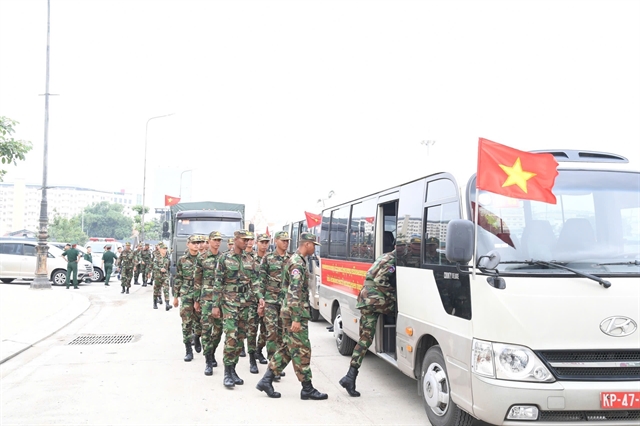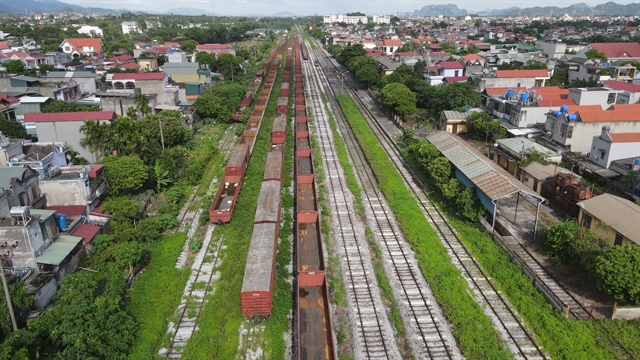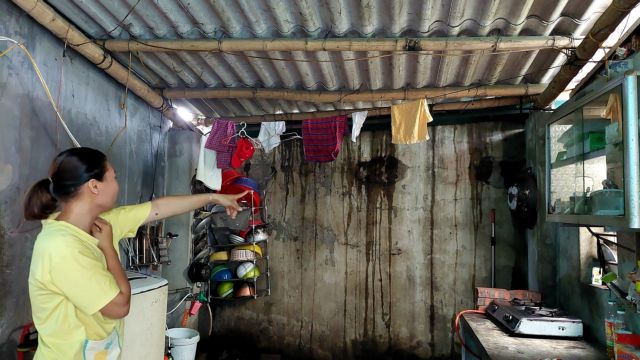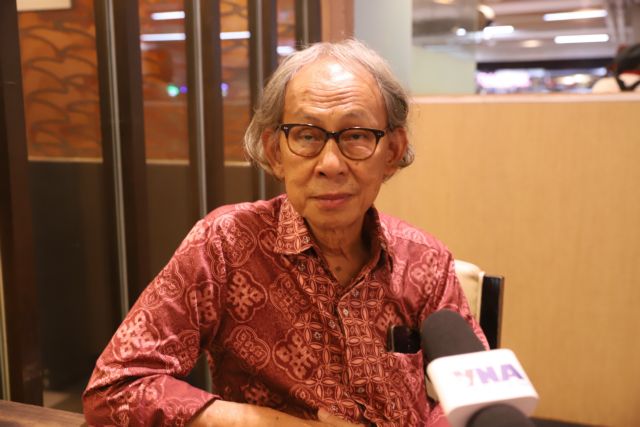 Society
Society

 |
| The construction of the 131-km-long railway connecting Hà Nội and the coastal province of Quảng Ninh has been delayed for nearly 20 years. VNA/VNS Photo Thanh Vân |
QUẢNG NINH — The construction of a 131-km-long railway connecting Hà Nội and the coastal province of Quảng Ninh has been delayed for nearly 20 years, trapping people living in the area set for construction as they have not been given the proper compensation.
The 131-km-long railway project was approved in 2004, and construction started the following year. However, the project's completion has been delayed several times.
In 2011, the construction was suspended as the project was among non-urgent public investment projects that the Government gave low priority for investment in the Government's Resolution No. 11/2011/NQ-CP.
To make room for the railway project, more than 3,600 families in Hạ Long, Uông Bí, Đông Triều, and Quảng Yên have to relocate. However, nearly two decades later, they have still not received proper compensation to allow them to do so.
In addition, they are not allowed to make any transactions relating to the houses in the project areas or even repair the houses, even though they are degraded.
Trần Văn Nhuần, a resident of Quang Trung ward, Uông Bí City, said that for years he wanted to transfer the land use rights or build a new house for his children as they all grew up, got married and had children.
"As my house is in the railway project area, I can do nothing with it," Nhuần said, adding that his children and his grandchildren were now all living together in an old cramped house over 50 years old.
 |
| A degraded house located in the railway project area, whose owners are not allowed to repair it. VNA/VNS Photo Thanh Vân |
Nhuần's daughter-in-law Dư Thị Hợp said that whenever it rained, rainwater leaked everywhere in the house.
Another resident, Vũ Văn Miện in Mạo Khê Ward, Đông Triều Town, is the breadwinner of his family of three, with his ill son and a young grandchild.
His house is small and has degraded over the years, but he cannot repair or sell it as it is in the project area.
Miện said he wished authorities at both central and local levels quickly make a plan to remove and shorten the project's implementation time.
"If it continues for a few more years, people who are over 70 years old like me can't wait," Miện said.
As the project is suspended, affected families have not received compensation and have no money to buy land elsewhere.
As the project is unfinished, compensation for site clearances has also stopped. Out of more than 3,600 affected households, around 1,600 have been approved for compensation, support, resettlement and payment plans. More than 500 of those approved are still waiting for payment.
More than 1,200 households are still waiting to receive initial approval.
Lê Văn Lương, director of the Centre for Land Fund Development in Đông Triều, said that the town has 1,372 households affected by the project. Of them, only 902 were approved for compensation.
"The prolonged project has greatly affected people's lives and political security situation," he said.
Over 400 households have not yet been approved for land clearance compensation but cannot convert the land use purpose, change the land use right or repair/build. Those affected had to petition repeatedly for years.
According to Trương Quốc Huy, Vice Chairman of the People's Committee of Quang Trung Ward, Uông Bí City, households had to move their houses to make room for the construction of the railway line and additional areas for the railway safety corridor. According to the Construction Law, people are not allowed to build new works within the safety corridor of technical infrastructure works.
"The problem is that households will not be compensated for the areas that serve railway safety corridors," he said.
"There are many households that have had almost all of their existing land acquired to serve the project, but have not been compensated, so they do not have the financial resources to buy land elsewhere and have to continue to live in degraded houses," Huy said. VNS
Inbox:
Transport Ministry proposes to continue railway project
According to the Ministry of Transport, the national railway network plan for the period 2021-2030 continues to determine the completion of the Yên Viên-Phả Lại-Hạ Long-Cái Lân railway. The project aims to harmoniously develop modes of transport, ensure connectivity with optimised costs and improve the region's socio-economic development and localities along the route.
The railway is designed with a speed limit of 120 km/h for passenger trains and 80 km/h for freight trains. Once completed, the new line would cut the journey from Hạ Long to Yên Viên to just an hour and a half to two hours for passenger trains and three to four hours for freight trains.
The railway project has a length of 131 km, including 43 km of new construction and 88 km of renovation and upgrades. It has a total investment of VNĐ 7.665 trillion, divided into four sub-projects operating independently. The project began in 2005. However, as the project was one of those suspended to cut public investment under the Government's Resolution No. 11/2011/NQ-CP, work was suspended in 2011.
Only one of four sub-projects, the Hạ Long-Cái Lân section, was completed and put into operation.
The remaining three sub-projects, Yên Viên-Lim, Lim–Phả Lại, and Phả Lại–Hạ Long, have implemented compensation, site clearance, and road construction. VNS




